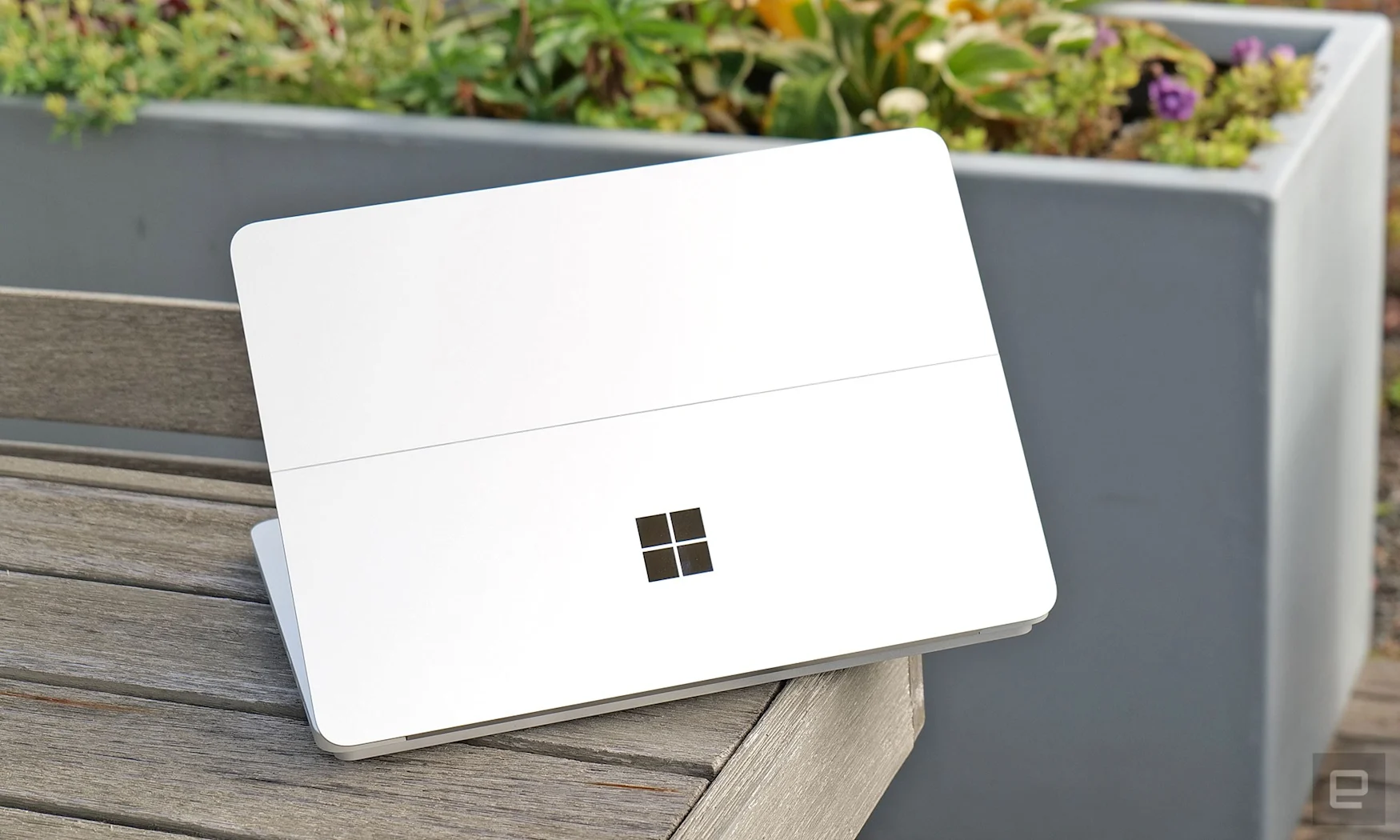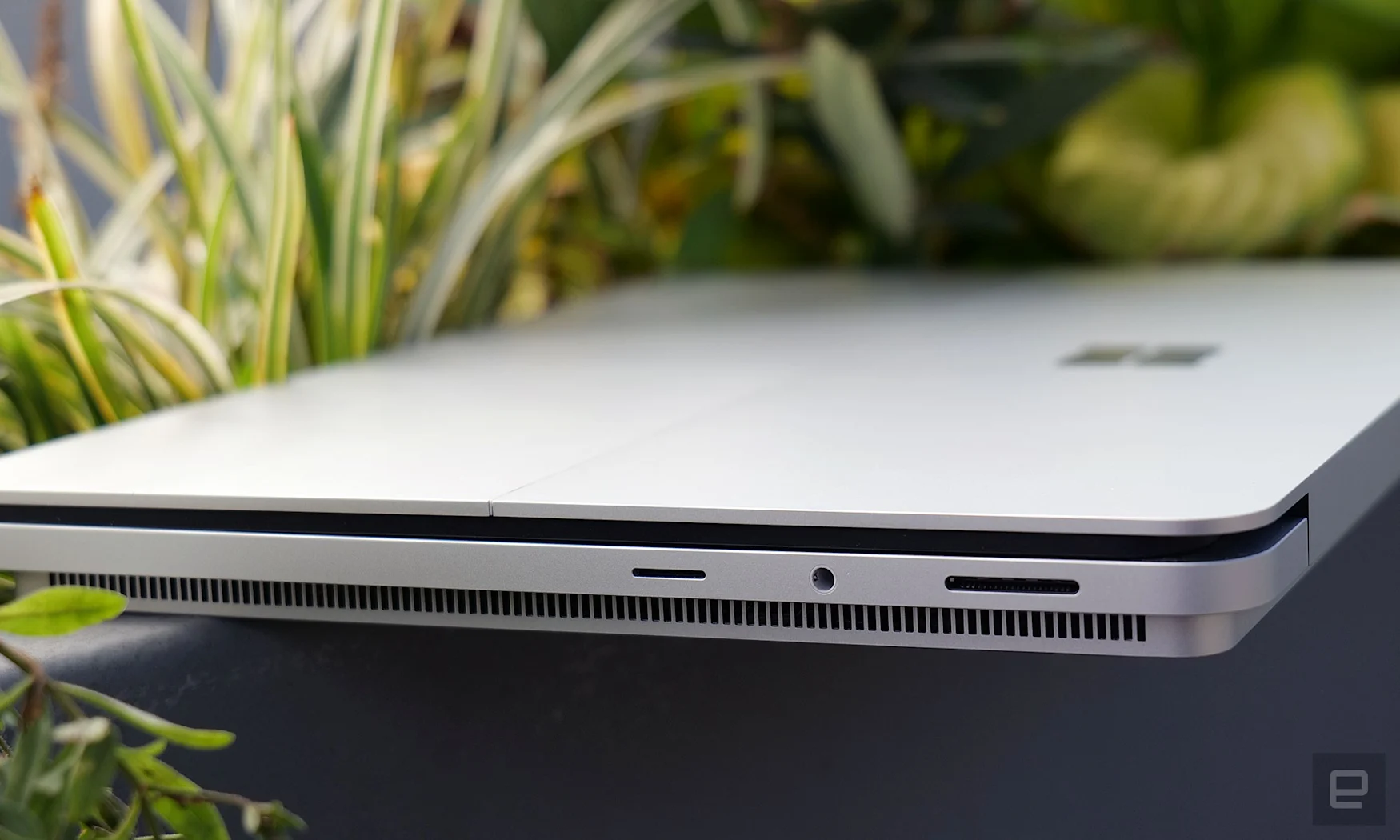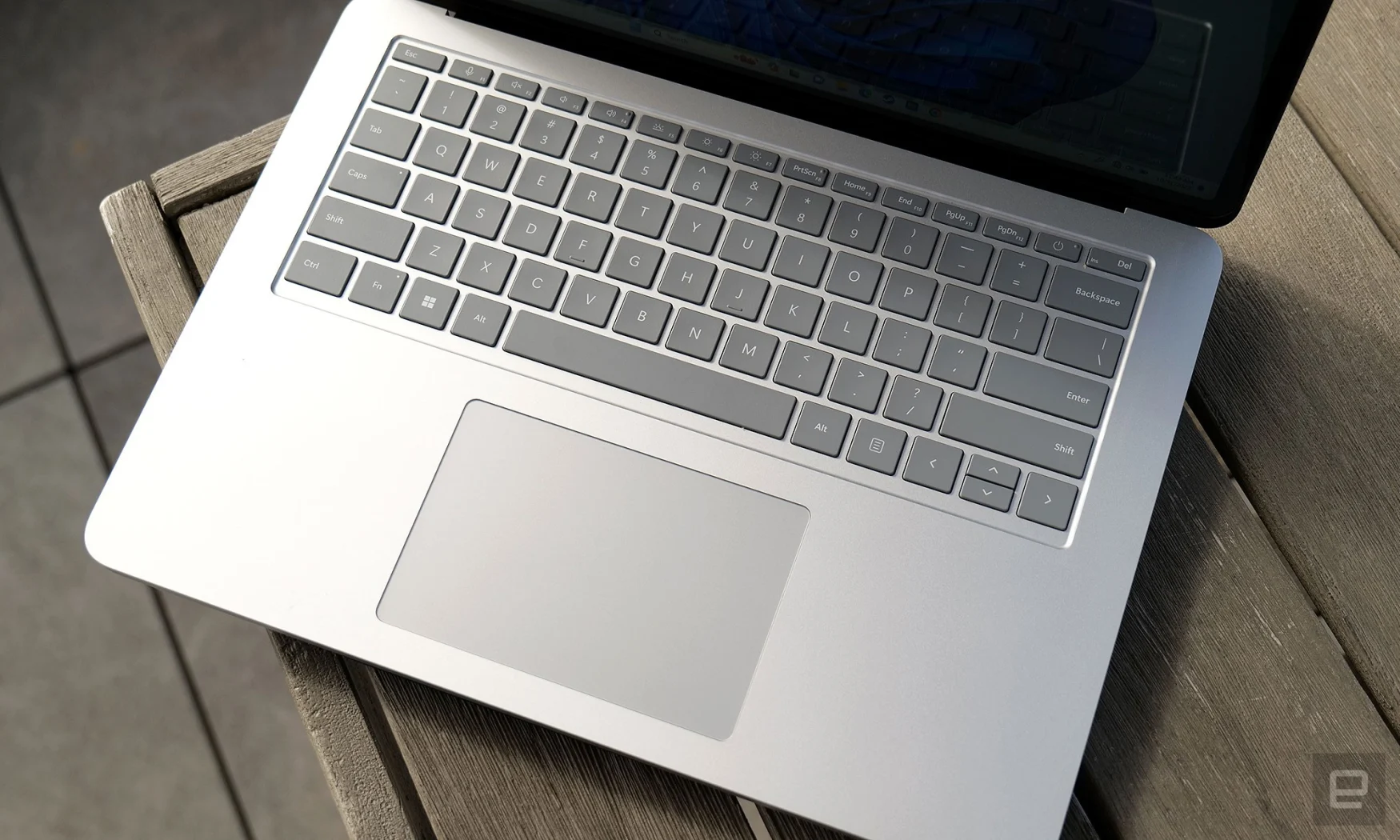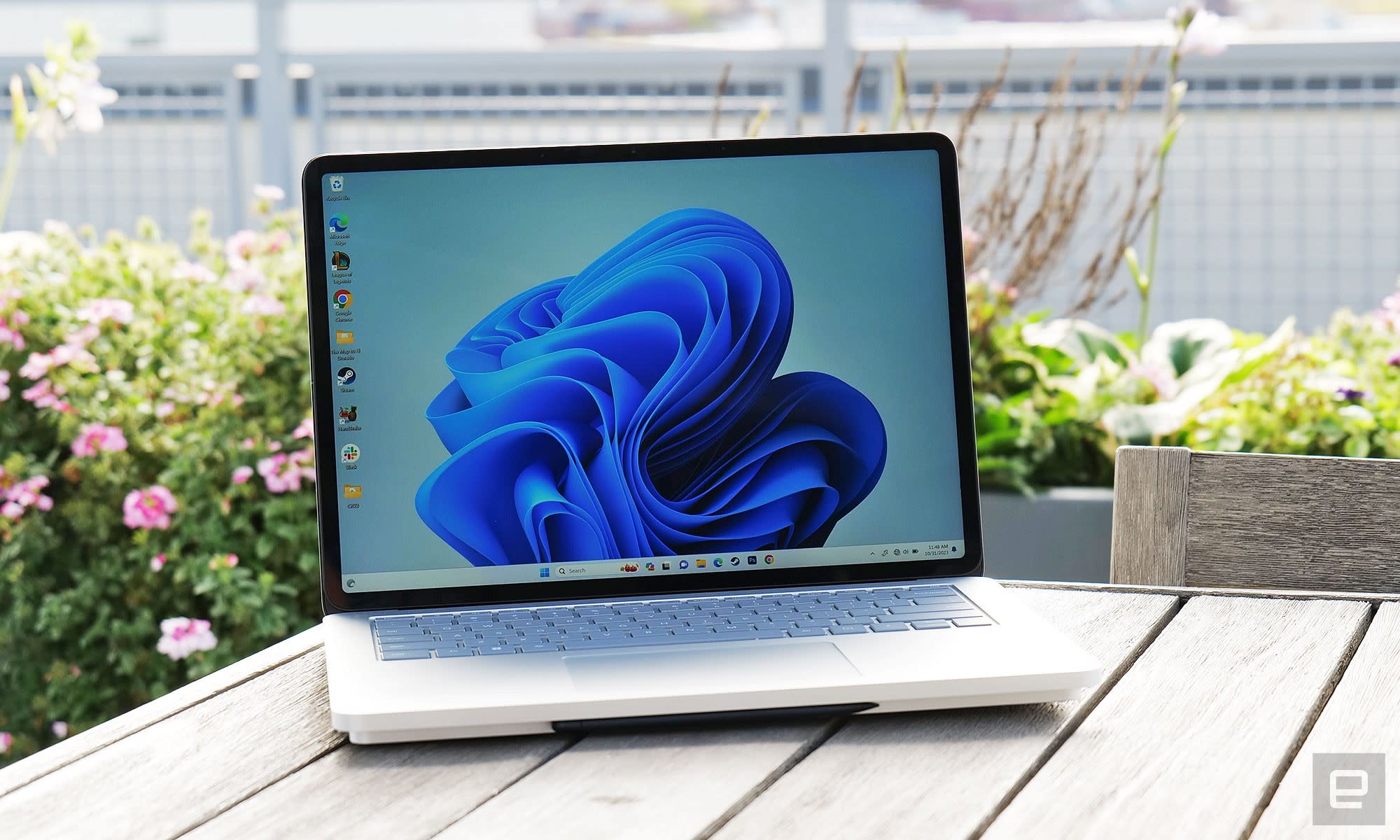Even among 2-in-1 PCs, Microsoft’s Surface Laptop Studio offers a unique blend of performance and adaptability. But now on the second model, thanks to refreshed specs plus the addition of a USB-A port and a microSD card reader, it feels like Microsoft has given its mobile workstation the finishing touches it needed all along, resulting in what may be the ultimate all-rounder. Unfortunately with a high starting price and costly upgrades for more RAM and a discrete GPU, the Surface Laptop Studio 2 is hard to recommend for everyone.
Design: Funky but functional
Francis Bacon once said “There is no excellent beauty that hath not some strangeness in the proportion,” which is a sentiment that feels applicable to the Surface Laptop Studio 2. It features a minimalist aluminum chassis (instead of the magnesium frame on the previous model) but in a somewhat unconventional configuration. The laptop’s lid is divided into two halves, which allows the screen to pivot 180 degrees or tilt down into an easel. Meanwhile, its base features a two-tiered design that allows the laptop to keep its vents away from the sides of the system while also providing a hidden magnetic charging spot for a Surface Slim Pen 2 (which sadly, is not included).
Microsoft Microsoft Surface Laptop Studio 2
Pros
- Great screen
- Better than expected battery life
- Unique design
- Excellent touchpad
- New USB-A port and microSD card reader
Cons
- Very expensive
- Limited configuration options
- Surface Slim Pen 2 comes separately
- More bulky than similarly-sized ultraportables
The two biggest changes to the Studio 2’s design are the addition of the USB-A port and a microSD card slot. When combined with the existing dual USB-C jacks, you get a solid range of connectivity options. It means you can transfer files from a camera directly to the laptop and you’ll rarely (if ever) have to worry about carrying around extra dongles for peripherals. That said, Surface Laptop Studio 2’s slightly thicker chassis (but only by one or two millimeters) and the change to aluminum does mean an extra third of a pound in weight (4.18 pounds with integrated graphics or 4.37 with a discrete GPU).
Display: Vivid from any angle
The Surface Laptop Studio 2’s screen hasn’t changed much from the previous model, but that’s not a bad thing. Its 14.4-inch panel features the same 2,400 x 1,600 resolution, along with a dynamic refresh rate that can switch between 60Hz and 120Hz depending on what you’re looking at. However, brightness is a touch better at around 500 nits, or 650 nits with HDR turned on. And you still get full Windows Inking support with 4,096 levels of pressure sensitivity.
Performance: More than enough power, but it’ll cost you

For the new model, Microsoft streamlined the Surface Laptop Studio 2’s specs by offering a single processor across every config: an Intel Core i7-13700H. From there you can choose a base model with integrated graphics or upgrade to one with either an RTX 4050 or RTX 4060 GPU. The annoying thing is that, to get that 4060, you also have to get 64GB of RAM, which is overkill for most people. That’s unfortunate because that config costs $3,300. An option with only 32GB of RAM and a lower cost would be appreciated.
That said, it’s hard to complain about its actual performance. The Surface Laptop Studio 2 kept pace with similarly specced gaming laptops including the MSI Stealth 14 Studio and Razer Blade 18 across both benchmarks and real-world tests. While it’s not meant to be a dedicated gaming rig, it also hit 62 fps in Cyberpunk 2077 at 1920 x 1200 with high graphics and ray tracing set to ultra (though that is with NVIDIA’s DLSS turned on).
Battery Life: Surprisingly decent

Even with a discrete GPU, the Surface Laptop Studio 2’s longevity is closer to a standard ultraportable than more short-lived gaming notebooks. On PCMark 10’s OpenOffice battery rundown test, it lasted eight hours and 40 minutes. That’s three hours more than both the MSI Stealth 14 Studio and the Razer Blade 16, which lasted 5:19 and 5:10, respectively. However, more typical ultraportables like ASUS’ Zenbook S 13 fared even better with a time of 10:39.
Wrap-up
The two major knocks against the Surface Laptop Studio 2 are its price and limited configurations that top out with NVIDIA RTX 4060 graphics, which makes it feel more like a great all-rounder than an all-out mobile powerhouse. While there’s no defending its cost, I’m not as bothered by the latter, because there’s a lot of value in a system that offers unmatched adaptability.

With its innovative design, brilliant display, above-average battery life and improved connectivity, the Surface Laptop Studio 2 can handle a lot of different assignments with ease. It’s a great system for editing photos and videos, and stylus support makes drawing or taking notes a delight. When you factor in the excellent keyboard, Windows Hello IR cameras and one of best touchpads on a Windows laptop today (courtesy of Sensel), you get an incredibly versatile mobile workstation. And if we revisit that classic line from Shakespeare, “A jack of all trades is a master of none, but oftentimes better than a master of one,” which is precisely what we have here with the Surface Laptop Studio 2. I just wish it was a bit cheaper.

